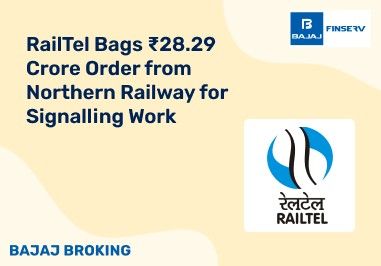BAJAJ BROKING
PDP Shipping & Projects IPO is Open!
Open a Free Demat Account
Trade Now, Pay Later with up to 4x
Track Market Movers Instantly
Understanding the Pre-Open Market Session in the Indian Stock Market
Introduction
The pre-open market session, also known as the pre-market session, is a crucial phase in the trading day of the Indian stock market. This session occurs before the regular market hours and serves as a preparatory stage for the main trading session.
Highlights
- Understanding the pre-open market session in India.
- The purpose and significance of the pre-open market.
- Factors influencing pre-open market movements.
- The role of pre-open market data in investment decisions.
- Strategies for navigating the pre-open market session.
What Is the Pre-Open Market Session in the Stock Market in India?
During the pre-open market session, investors and traders can place orders, but these orders are not immediately executed. Instead, they are accumulated and used to determine the opening price for each stock or index when the regular market hours commence.
The purpose of the pre-open market session is to provide a structured and transparent mechanism for price discovery before the main trading session begins. This session allows market participants to gauge the overall sentiment and direction of the market, enabling them to make more informed investment decisions.
The Significance of the Pre-Open Market Session
The pre-open market session in the Indian stock market holds significant importance for both investors and traders. Here's why:
1. Price Discovery: The pre-open market session facilitates the process of price discovery, where the opening prices of stocks and indices are determined based on the orders placed
during this time. This helps to ensure that the market opens at a fair and representative price, reflecting the overall market sentiment.
2. Volatility Management: The pre-open market session allows for the gradual incorporation of new information and market developments into stock prices. This helps to reduce the potential for excessive volatility during the regular trading hours, as the market has time to adjust to the latest news and events.
3. Informed Decision-Making: The data and information generated during the pre-open market session can be a valuable tool for investors and traders. They can analyse this data to gauge the overall market sentiment, identify potential trading opportunities, and make more informed investment decisions.
4. Liquidity Provisioning: The pre-open market session provides a platform for market participants to place orders and establish their positions before the main trading session begins. This can help to improve liquidity and ensure a smoother transition into the regular trading hours.
Factors Influencing Pre-Open Market Movements
The movements and trends observed during the pre-open market session in India can be influenced by a variety of factors. Understanding these factors is crucial for investors and traders to make informed decisions. Some of the key factors influencing pre-open market movements include:
1. Global Market Developments: Events and market movements in major global markets, such as the United States, Europe, and Asia, can have a significant impact on the pre-open market session in India. Investors closely monitor these global developments to gauge the potential impact on the Indian market.
2. Domestic Economic and Political Factors: Domestic economic indicators, government policies, and political events in India can also influence the pre-open market session. Investors closely follow these factors to assess their potential impact on the Indian stock market.
3. Corporate Earnings and Announcements: The release of corporate earnings reports, mergers and acquisitions, and other company-specific news can significantly affect the trading sentiment and price movements during the pre-open market session.
4. Regulatory Changes: Announcements and updates from regulatory bodies, such as the Securities and Exchange Board of India (SEBI), can also influence the pre-open market session as they can impact the overall market dynamics.
5. Investor Sentiment: The overall sentiment and mood of the market participants can play a crucial role in shaping the pre-open market session. Factors like investor confidence, risk appetite, and market expectations can all contribute to the pre-open market movements.
Understanding the Role of Pre-Open Market Data
The data generated during the pre-open market session in India can provide valuable insights for investors and traders. This data includes information such as the indicative opening prices, order book depth, and trading volume. By analysing this data, market participants can gain a better understanding of the market sentiment and potential trading opportunities.
Here are some ways in which the pre-open market data can be utilised:
1. Identifying Market Trends: The pre-open market data can help investors and traders identify emerging trends and market patterns. This information can be used to make informed investment decisions and develop trading strategies.
2. Assessing Market Sentiment: The order book depth and trading volume during the pre-open market session can provide insights into the overall market sentiment. This information can be used to gauge the potential direction of the market and the level of investor interest.
3. Spotting Potential Opportunities: Analysing the pre-open market data can help investors and traders identify potential trading opportunities, such as stocks or sectors that are experiencing significant price movements or changes in trading volume.
4. Risk Management: The pre-open market data can also be used as a tool for risk management. By understanding the market dynamics and potential volatility during the pre-open session, investors can better prepare their trading strategies and manage their risk exposure.
5. Monitoring Corporate Developments: The pre-open market data can be used to monitor corporate developments, such as earnings announcements or mergers and acquisitions. This information can be used to make informed investment decisions and to anticipate potential market reactions.
Strategies for Navigating the Pre-Open Market Session
Navigating the pre-open market session in the Indian stock market requires a well-structured approach. Here are some strategies that investors and traders can consider:
1. Analyze Pre-Open Market Data: Closely monitor and analyse the pre-open market data, including indicative opening prices, order book depth, and trading volume. This information can help you assess the market sentiment and identify potential trading opportunities.
2. Stay Informed: Keep yourself updated on global and domestic market developments, corporate news, and regulatory changes that can impact the pre-open market session. This will help you make more informed investment decisions.
3. Develop a Trading Plan: Establish a well-thought-out trading plan that outlines your investment objectives, risk tolerance, and entry and exit strategies. This will help you stay disciplined and make informed decisions during the pre-open market session.
4. Utilise Limit Orders: Consider placing limit orders during the pre-open market session to ensure that your trades are executed at your desired price levels. This can help you manage your risk and avoid potential slippage.
5. Monitor Volatility: Be aware of the potential for increased volatility during the pre-open market session, especially during periods of heightened market uncertainty. Adjust your trading strategies accordingly to manage the risks.
Conclusion
By incorporating these strategies and actively monitoring the pre-open market session, investors and traders can navigate the Indian stock market with greater confidence and make more informed investment decisions.
Disclaimer: Investments in the securities market are subject to market risk, read all related documents carefully before investing.
This content is for educational purposes only. Securities quoted are exemplary and not recommendatory.
For All Disclaimers Click Here: https://bit.ly/3Tcsfuc
Share this article:
Read More Blogs
Our Secure Trading Platforms
Level up your stock market experience: Download the Bajaj Broking App for effortless investing and trading












